Team:Peking/Modeling/Ring
From 2012.igem.org
Background
Genetic engineering circuits in E.coli enable cells to perform programmably; however, more complex functions are limited by leakage of the gene expression. Consider that cells are able to detect environmental signals such as explosives (e.g., RDX and TNT), toxins, metals, salinity, pH, temperature and light, cell-cell communication-based multicellular networks provide an extended vista for synthetic biology [1].
As a hallmark of coordinated cellular behavior, pattern formation typically required cell-cell communication and intracellular signal processing. For more site-specific signaling and pattern formation, light may be more appropriate alternative. Due to the high sensitivity of our Luminesensor, it is possible to construct a ring-like pattern based on light-communication, previously done by AHL.
Circuit Design
The high sensitivity of Luminesensor extends its field applications and enables us to achieve light-communication between E. coli cells. As demonstrations, we constructed and ring-like pattern in E. coli based on light-communication between cells.
Figure 1 illustrates the design of the ring-like pattern formation multicellular system. There are two kinds of E. coli cells on the plate [1]: sender cells and receiver cells. Receiver cells are uniformly mixed in the nutrient medium, while sender cells are place on the surface of the medium, specifically, on the middle point. Sender cells emit light whose wavelength at 460 to 490 nm, where Luminesensor in the receiver cells would be activated and then coordinate cells' behavors.

Figure 1. Genetic Circuit of Ring Pattern Formation.
Reference
- 1. Subhayu Basu et al.(2005), A synthetic multicellular system for programmed pattern formation. Nature, vol.434: 1130: 1134
 "
"














